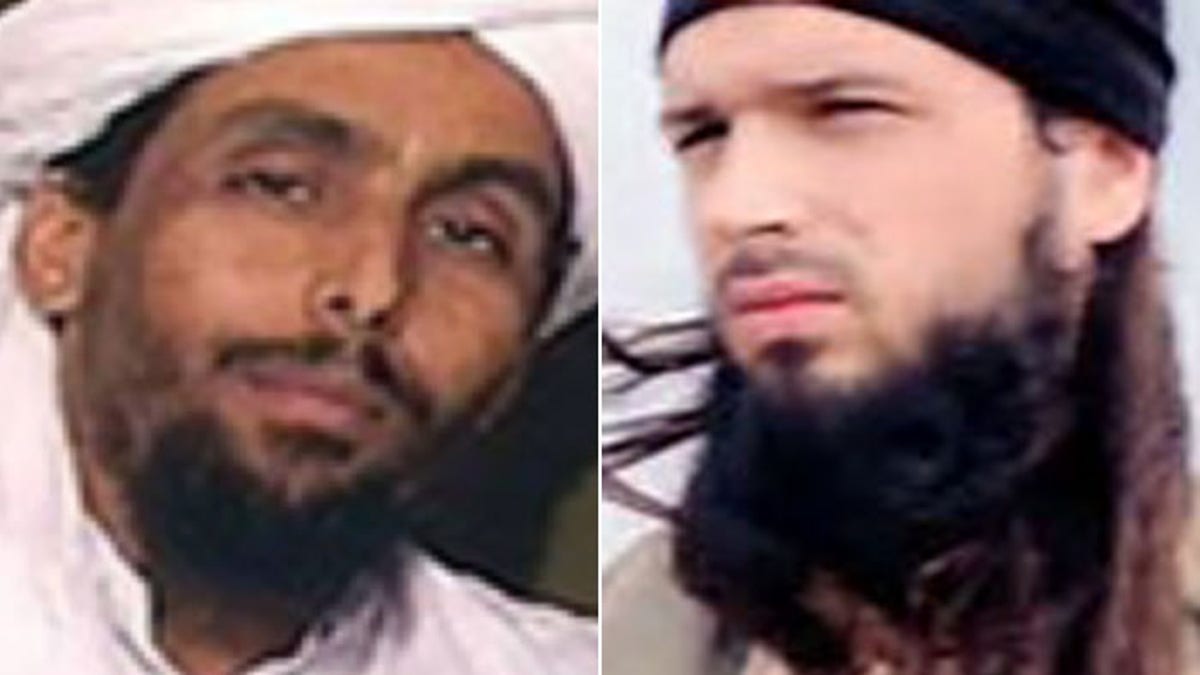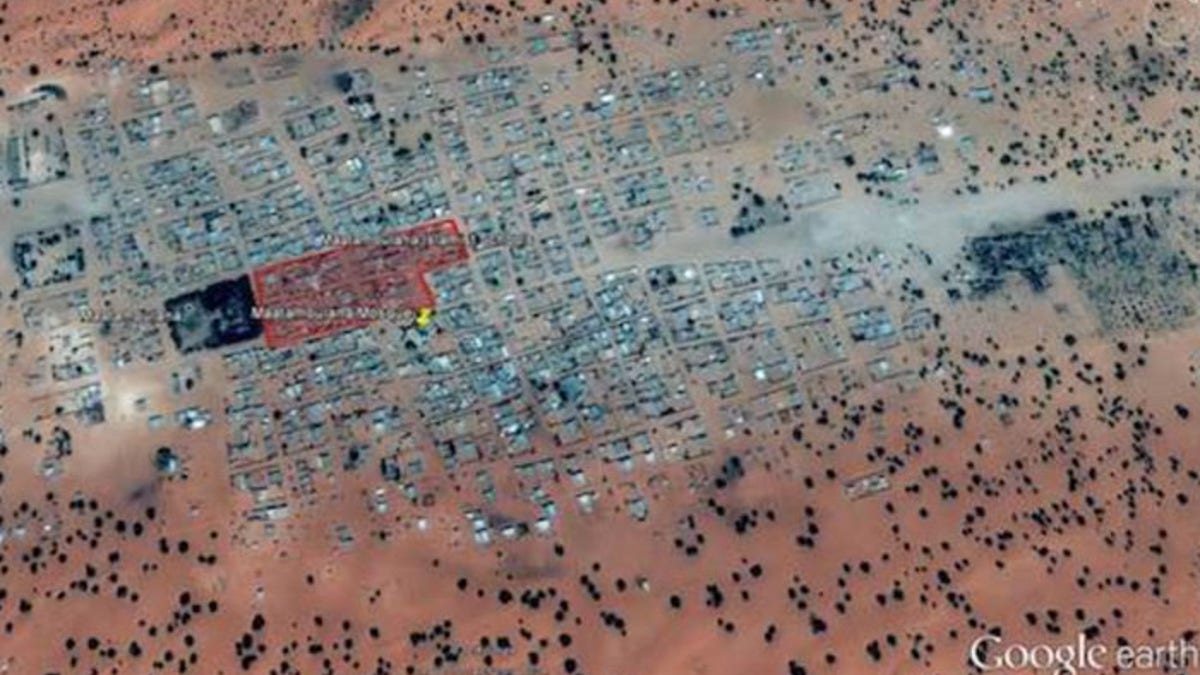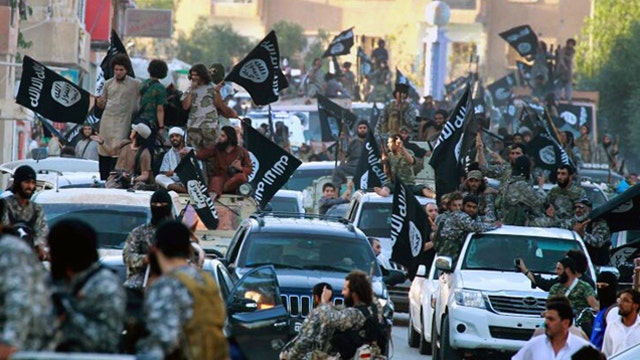ISIS, Boko Haram, Al Qaeda: Triple team of terror
Are the world's three most infamous terrorist organizations working together in training camps?
The world’s three most infamous terrorist organizations are working together at Al-Qaeda-run training camps in the Sahara Desert in Mauritania, where dozens of recruits from the U.S., Canada and Europe are being indoctrinated into violent jihad and training for attacks that could expand the so-called caliphate across North and West Africa, according to analysts.
ISIS, Boko Haram and Al-Qaeda all have links to two camps in the remote sands of the expansive North African country, according to Veryan Khan, editorial director for the Florida-based Terrorism Research & Analysis Consortium, which tracks international terrorism and had a source on the ground in Mauritania. The sparsely populated Islamic Republic weathered Arab Spring demonstrations to remain stable, but shares a border with troubled Mali and is not far from Nigeria, where Boko Haram is based.
“The situation in Mauritania is a powder keg very few people are talking about.”
“The situation in Mauritania is a powder keg very few people are talking about,” Khan said.
At least 80 trainees, recruits from the United States, Canada, and parts of Europe, including France, are known to be training at the camps, according to a TRAC source who visited the camp and obtained documentation. Most of Mauritania's population of roughly 3 million is concentrated on the coast, around the capital of Nouakchott, while the rest of the country, which is the size of Texas and New Mexico, is arid desert and sparsely inhabited. The camps are far from the population centers.
“This is not a travel destination,” Khan said. “The only reason to be there from a Western country is to train for terrorism.”
Signs in English can be seen in videos and photos obtained by TRAC inside one of the main camps at the Maatamoulana Mosque, providing unmistakable evidence of westerners' presence.

“The fear of returning foreign fighters from Syria and Iraq is high, but Mauritania-trained fighters are not even on anyone's radar,” said Khan.
The camp’s leadership was emboldened by the recent release of five notorious terrorists, including the No. 3 man in Usama Bin Laden’s network, all of whom were imprisoned in the Nouakchott Central Prison in the Mauritanian capital, but released following a Jan. 24 prison riot in which two guards were taken hostage and threatened along with their family members with being executed.
“The situation was resolved following negotiations with the public prosecutor and Chief of the National Guards,” Khan said. “The detainees were released on Feb. 23 and are free to pursue their jihadist activities.”
Freed were Bin Laden’s chief, El Khadim Ould Seman, and four of his associates who were pedigreed members of the Salafist Group for Preaching and Combat, a group whose core membership became Al Qaeda in the Islamic Maghreb.
Once freed, the terrorists could easily make their way from Nouakchott to the camps in the nation's remote eastern region to join the thriving camps, which featured mosques, homes and training facilities.
Among the most notorious terrorists to leave the prison were:
• Taleb Ould Ahmedna, who participated in a failed kidnapping attempt of a German diplomat in 2007 and the successful kidnapping of two Italian citizens, Sergio Cicala and his wife, Philomene Kaboure, in 2009.
• Teyib Ould Saleck, who was sentenced for several terror-related activities, namely recruitment and financing terrorist organizations in Mauritania.
• Sidi Ould Sidina, who was sentenced for his participation in an attack that killed four French citizens in Aleg in December, 2007.
• Mohamed Said, who was imprisoned for his involvement in recruitment and training camps in South Algeria and North Mali and for participating in the attack on the French embassy.
Other infamous killers who trained in the camps include Canadians Kristos Katsiroubas and Ali Medlej of London, Ontario, who were accused of participating with three-dozen armed Islamists in the Jan. 16, 2013 Al Qaeda-linked attack on a gas plant in Algeria, where they were both killed along with all but three of the jihadists. Of the hundreds of hostages held for four days, more than three-dozen were executed, some in a massive explosion caused by the terrorists.
Aaron Yoon, an ally of Katsiroubas and Medlej, was arrested in Mauritania before the attack and convicted of terror-related charges, but was freed in 2013 after 18 months and was last known to be living in London.
Maxime Hauchard of Normandy, France, identified in Nov. 2014 as the executioner who led the beheading of 18 captives from Syria and American aid worker Peter Kassig, traveled twice to Mauritania.
Marcus Dwayne Robertson, also known as Cleric Abu Taubah, used his Florida-based organization, Fundamental Islamic Knowledge Seminary, to send recruits to Mauritania before he was imprisoned in Florida on a weapons charge.
Ties to both Boko Haram and ISIS are also evident in the camps and in Mauritania.
Eurasia Review reported in 2011 that former Mauritania President Maaouya Ould Sid’Ahmed Taya, who led a crackdown on terrorists, acknowledged that the terror group’s militants were trained in Mauritania and claimed that Mauritania “exported” Boko Haram to Nigeria.

Maaouya Ould Sid’Ahmed Taya acknowledged that the terror group’s militants were trained in Mauritania and claimed that Mauritania “exported” Boko Haram to Nigeria.
There also are links between Mauritania and Boko Haram evident in its interaction with Al Qaeda for training and the supply lines for finance and weapons. In addition, there are recruitment centers and organized crime networks in Mauritania facilitating ISIS expansion in North and Central Africa, Khan said.
In December 2014, Mauritanian security forces arrested four ISIS terror suspects in Zouérate, the largest town in northern in Mauritania, who claimed the Islamic State was "on its way to that country.”
African Youth Activist Omar Ould Dahmed told African media that the appearance of such groups in Zouérate isn’t surprising.
"The discourse of terrorist groups has been stepped up to kindle young people's enthusiasm," Dahmed said. "The location of Zouérate on the northern border and the fact that it lives on smuggling oil, foods and weapons made it susceptible to the infiltration of extremist ideology."
In another event on Oct. 15, 2014, the Algerian military arrested a Mauritanian member of the Okba Ibn Nafaa Brigade, which operates in the Jebel Chaambi border region of Algeria and Tunisia, and has formally “pledged allegiance” to ISIS in 2014.
“According to the Algerian security forces, Safieddine al-Mauritani and another member of the group were traveling to Mali in a four-wheel vehicle loaded with arms and a considerable amount of cash to execute attacks,” Khan said.
“The Safieddine al-Mauritani arrest means that the traditional supply routes used by the cornucopia of jihadist terrorist groups in North Africa is now also being utilized by the Islamic State to catalyze their expansion on the African continent.”
Besides the two main Al-Qaeda terrorists training camps, there are about 7,000 mosques and 1,000 madrassas, or Islamic religious schools, in Mauritania, but the Mauritanian government monitors very few, creating opportunities for these institutions to be used as propaganda and training centers, Khan said.
Within Mauritania, there have been several terrorism related incidents waged by jihadists since 2005, including the assassination of four French tourists in Aleg by Al Qaeda, attacks on the Israeli and French embassies, clashes between Al Qaeda members and Mauritanian forces in Tevragh Zeina, the beheading of 12 Mauritanian soldiers, the murder of Christopher Ervin Leggett, a U.S. citizen, the kidnapping of three Spanish citizens, the kidnapping of an Italian couple kidnapped and other embassy attacks that were prevented.

